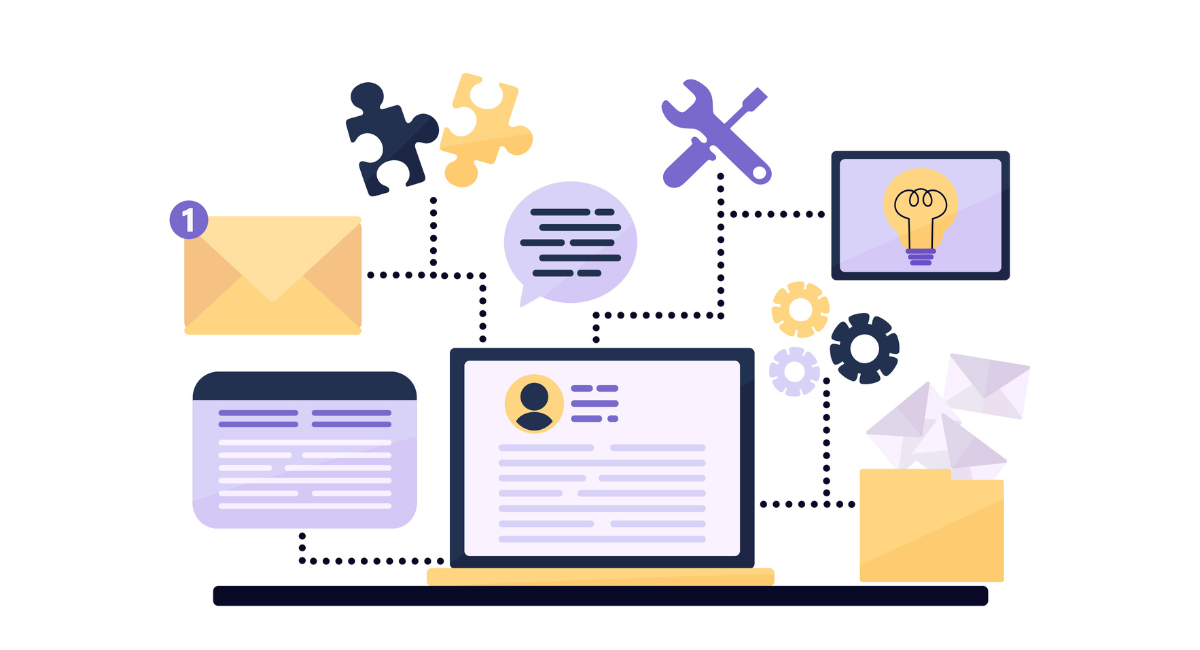Integration testing generally is a crucial phase in the life cycle of software. Basically, it is that type of testing that involves combing and testing of a number of software programs taken as a group so as to pin down the faults in interaction amid integrated units.
This step follows unit testing. The main objective of the integration %.testing is done to detect the problems that may arise when the different modules of a system interact with each other so that the integration of pieces can work collectively.
Now due to the increasing complexities of systems, good integration test is being considered as a prime aspect for deciding software quality.
What is Integration Testing?

Definition of Integration_LTG Testing
Integration testing is the level of software testing at which individual units are combined and tested as a group. It is mainly aimed at unearthing errors in interaction between integrated units.
In most cases, test drivers and test stubs are used under this context in accomplishing this activity if no GUI is used. Such testing normally follows unit testing and occurs before system testing.
The purpose of testing integration is to bring out the difference between units that operate separately and units that operate as a system.
Importance of Integration Testing in Software Development
Integration testing is, for some reasons, vital in the software development process: for one, it ensures that the integrated modules work as they should.
It is very important for it ensures the fact that the presence of errors during the interaction of modules is sometimes more critical than the errors in one separate module were and could be harder to trace.
Testing integration of innumerable software modules aids the verification of their functionality, performance, and reliability concerning their interaction.
Furthermore, this testing phase helps in identifying issues related to the software’s architecture, such as data handling between components and control flow issues.
By catching such problems early in the development lifecycle, integration testing can save costs and reduce complexity in later stages of product development.
How to Conduct Integration Testing

Strategies for Implementing Integration Testing
Several strategies can be employed when implementing integration test, each depending on the complexity and requirements of the project. Here are some commonly used strategies:
- Big Bang Integration Testing: This involves combining all the modules at once and testing the complete application thoroughly. While straightforward, it can be challenging to isolate defects due to the simultaneous integration of all components.
- Incremental Integration Testing: Contrary to the Big Bang approach, this strategy integrates and tests the modules step by step. It is categorized further into:
- Top-down Integration: This approach tests from top to bottom, following the control flow of the software system. Modules are integrated by moving downwards in the control path, using test stubs as necessary to simulate lower-level modules until they can be integrated.
- Bottom-up Integration: It begins integration tests from the bottom or subordinate modules first, moving up. It uses test drivers to simulate higher modules which are not yet integrated.
- Sandwich/Hybrid Testing: A combination of both top-down and bottom-up approaches, allowing simultaneous testing of both high-level and low-level modules, which can be useful for large systems with complex interactions.
Each of these strategies has its advantages and should be chosen based on specific project needs and available resources.
Steps to Perform Integration Testing
To effectively conduct integration testing, follow these structured steps:
1. Prepare the Test Plan: Define clear objectives and the scope of integration testing. Determine the strategy and outline the environment and tools needed.
2. Define Test Scenarios and Cases: Create detailed test cases that focus on the interaction between modules. Ensure that all pathways and error handling flows are tested.
3. Set Up the Test Environment: Assemble the hardware and software requirements necessary for testing. This includes configuration of the network settings, databases, and other dependencies.
4. Test Execution: Execute the integration tests according to the pre-designed test cases. Use tools and scripts to facilitate this process.
5. Record Defects and Outcomes: Document any anomalies or defects identified during testing. Keep detailed records for analysis and debugging.
6. Regression Testing: Once issues are resolved, perform regression testing to ensure that changes do not adversely affect existing functionalities.
7. Sign Off: After successful testing and defect resolution, sign off on the integration testing phase before moving into system testing. This ensures that the software meets the quality standards for interconnected components.
Each step is crucial to uncover different aspects of integration issues, thereby ensuring a consistent and reliable software end product.
Examples of Integration Testing
Real-Life Examples of Integration Testing
Integration testing is important to determine whether individual system elements work well together.
For instance, an integration test with e-commerce applications would assure a test scenario such that, through making a purchase, one checks interaction within the payment check system: a payment gateway, a database, and a user authentication system.
A good real example would be to check in life whether, during the purchasing process, a system would make the respective modification of an inventory database, create a bill, and mail back purchase confirmation.
Another example is when an application is monetized: an application's API needs to interact with a backend server. Testing can ensure that the API works correctly with, for example, user profiles or multimedia uploads being sent from the server.
Such integration tests ensure that typical requests and responses of the mobile application are in place with the server, and everything happens seamlessly.
Benefits of Using Integration Testing Examples
Using integration testing examples, such as those discussed previously, presents numerous benefits in the development process:
- Error Detection: It makes room for early error detection, thus minimizing the cost and effort required for bug fixing once the application is deployed.
- System Reliability: It tests how well various components of the software system interact with each other to be reliable at the end of the day. Therefore, it assures the user that the system will act as designed when used in different scenarios.
- Better Quality: Integration testing adds up to an enhanced overall quality of the product since all components work in perfect synchrony. This provides better experience to users and increased customer satisfaction.
- Documentation: Documented examples of successful integration tests serve as reference points, ensuring every new integration maintains consistency with established standards and requirements.
These show that it is the practice in real-world applications for building strong software systems. This motivates a developer to adapt related practices that assure high software quality and reliability.
Book a Demo and experience ContextQA testing platform in action with a complimentary, no-obligation session tailored to your business needs.
Conclusion
Integration testing is a critical stage in software development life that ensures different modules and services work hand in hand. Integration testing is carried out to reveal and eliminate flaws that occur because isolated units are integrated when responding to real-world problems and data.
Proper execution of strategies for integration testing results in substantial improvements in the dependability and efficiency of applications.
It is an investment in quality software products that will invariably benefit developers and end-users alike from a reduced amount of unidentified bugs and from a better overall user experience.
Note that the planning, implementation, and most importantly, continuously refining integration tests to meet new challenges and changes of the software are the most important parts of integration testing.
Also Read - Top 30+ Web API testing interview questions For 2024
